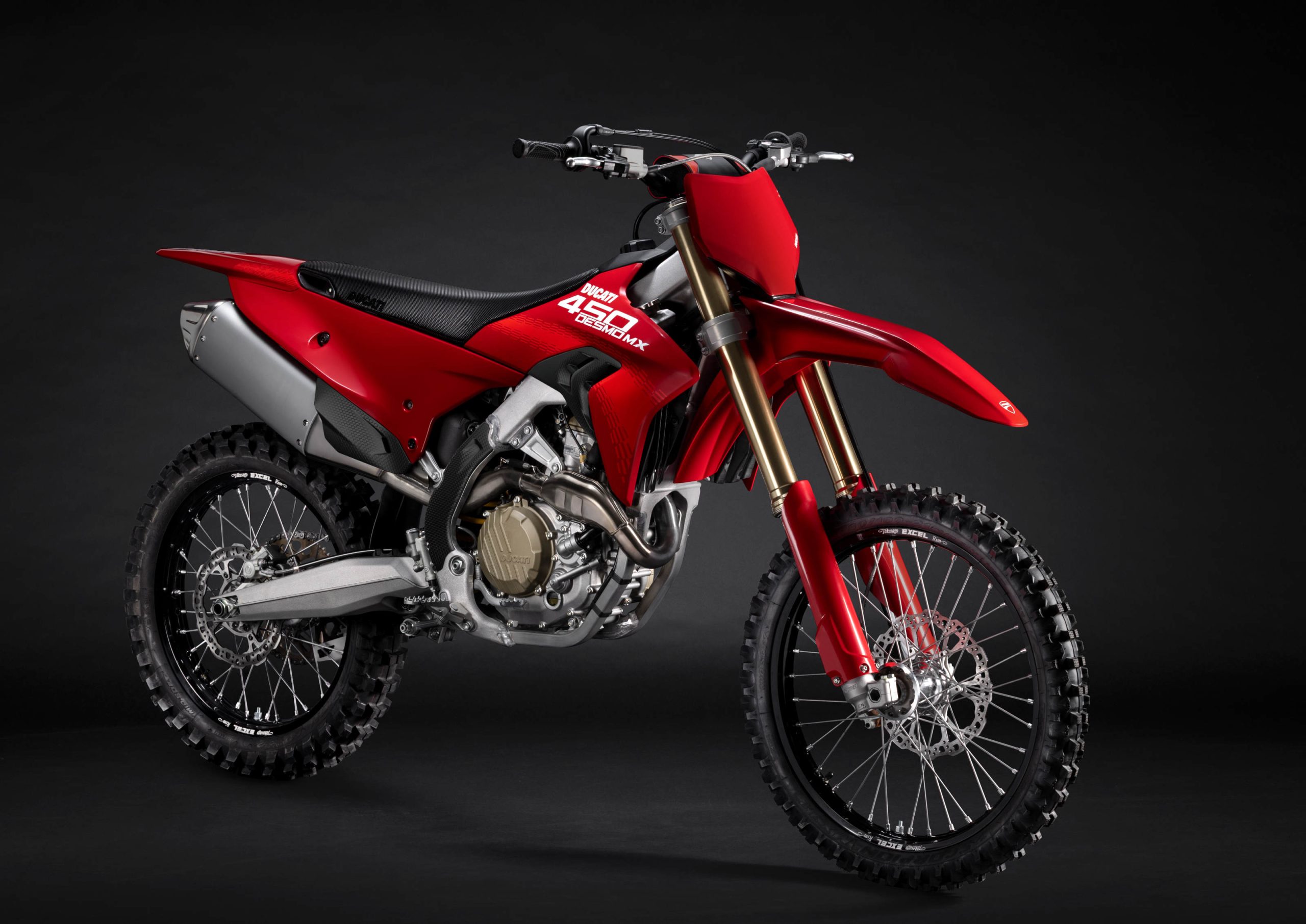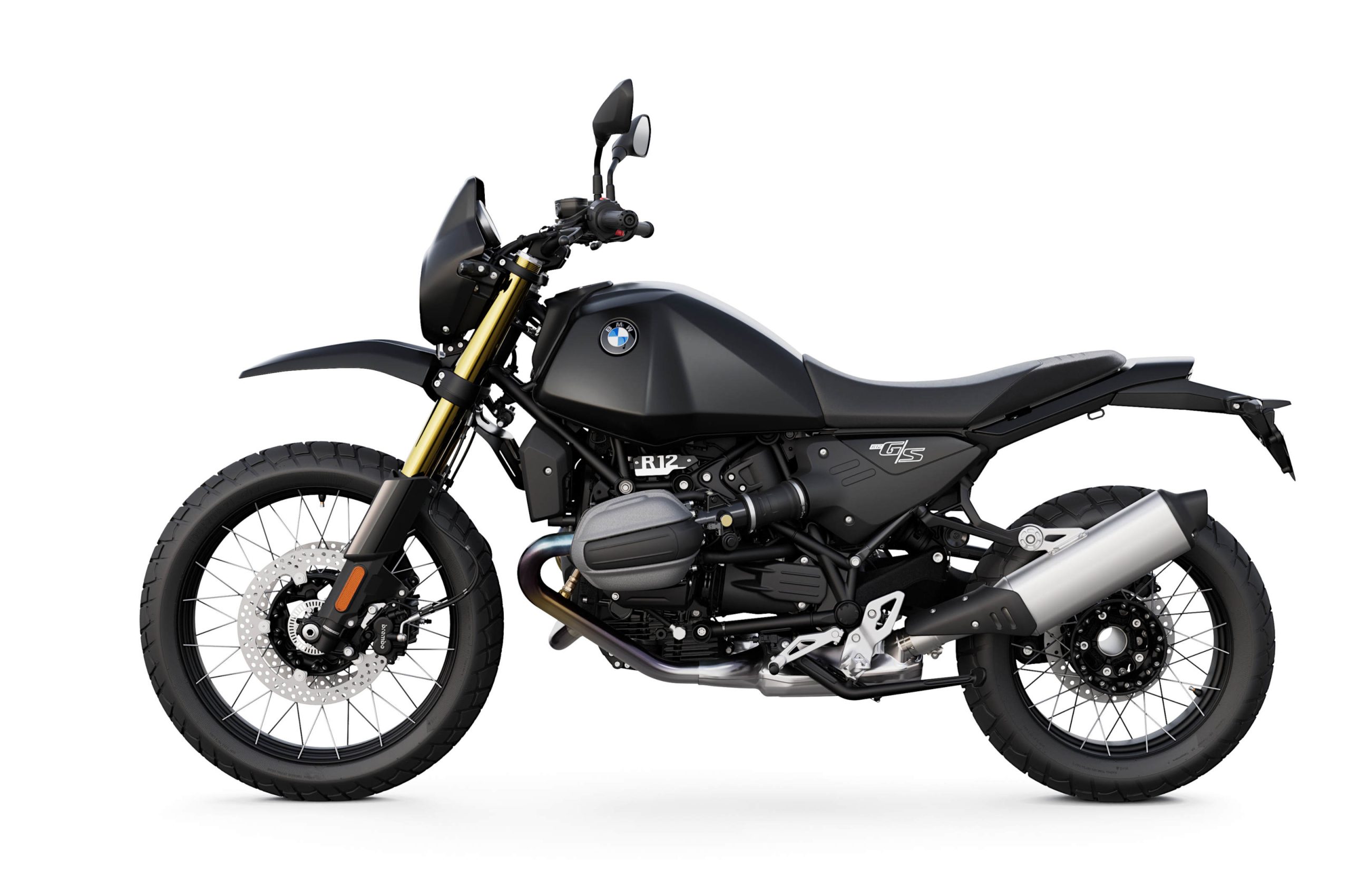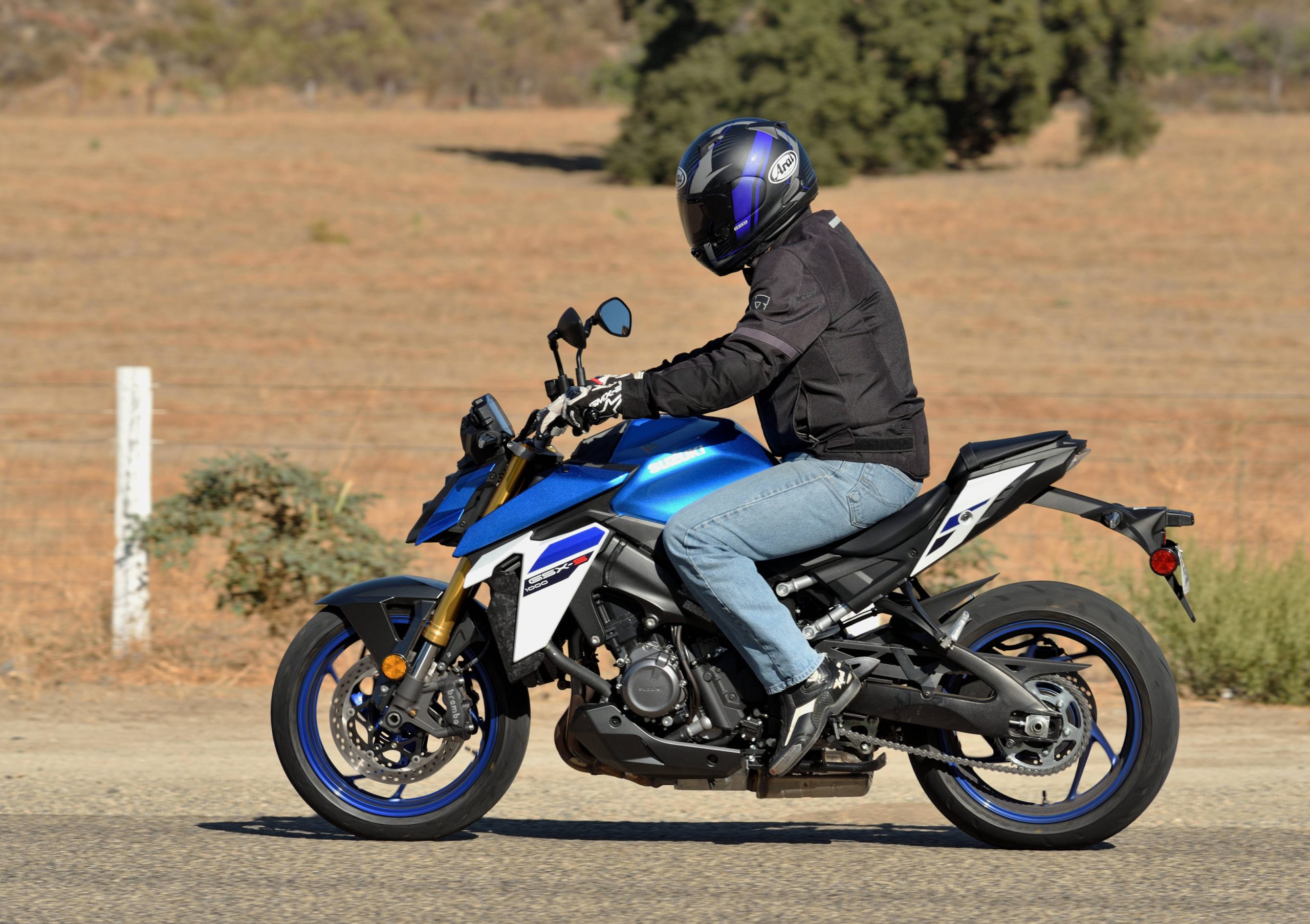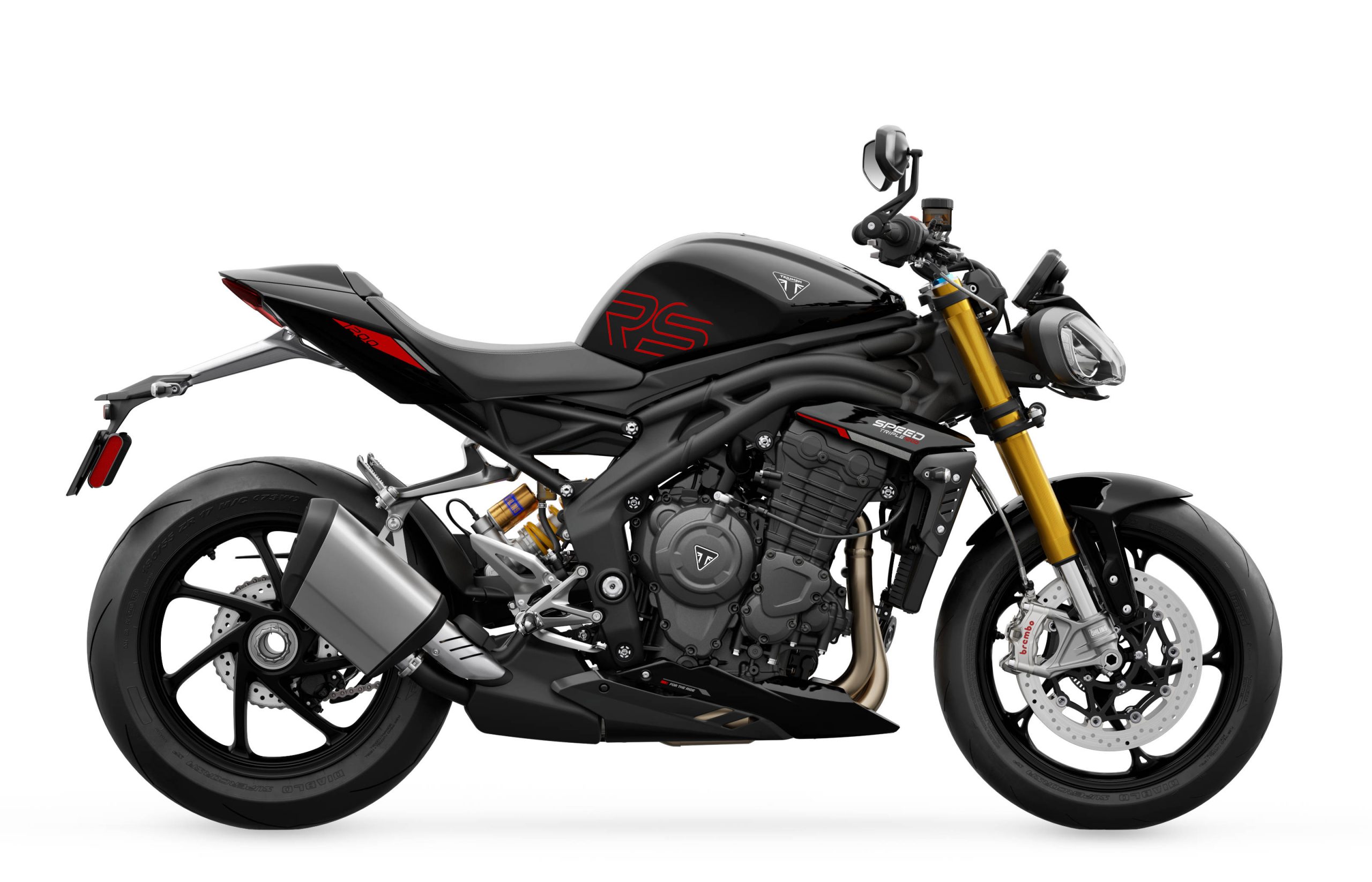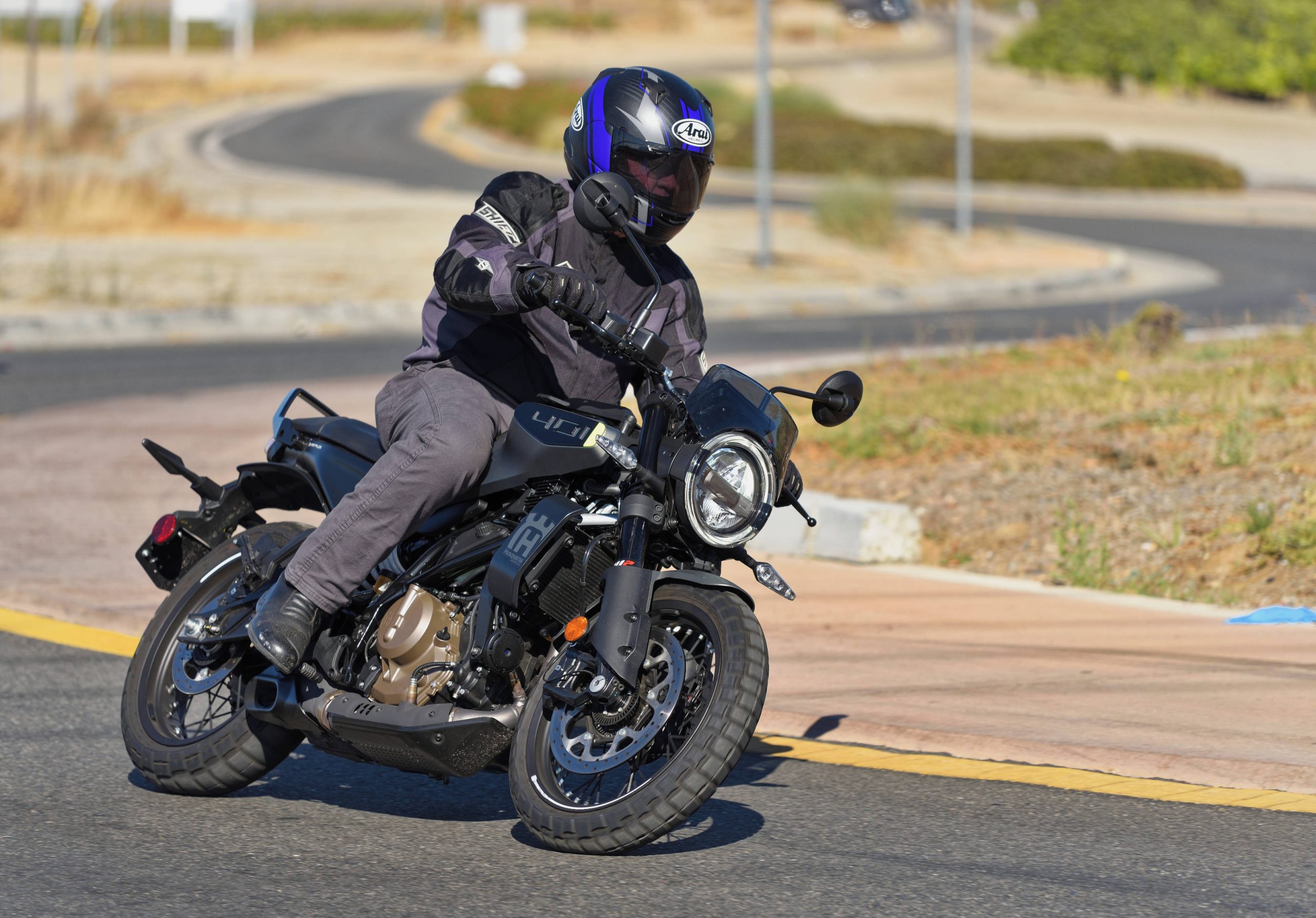
Ojai, California is the provider of some very entertainingly twisty pavement north of L.A. It is also located such that racetracks are close by. In light of these two facts, it is not surprising that Metzeler decided to choose this location to introduce their latest sportbike tire offering, the Sportec M-3.
Current sportbike development has made available unprecedented levels of performance to the street rider, whether the bike is a middleweight or liter class. They have the ability to “be” race bikes, rather than being “race replicas”, simply by removing certain D.O.T. required equipment, then adding safety wire and number plates. Such developments in motorcycle hardware require tire development to keep pace, both for performance and safety reasons

Metzeler makes all the usual claims for the M-3: quicker warm up, increased performance in both dry and wet conditions, plus longer life. How did they achieve that, and more importantly, are these claims credible? That, MD readers, is what we’re going to find out……
The M-3’s compound, called “DuraSil”, contains more silica than the compound of its predecessor (the M-1), to enhance wet weather performance. A key to the compound is the “stiffness modulus”, which is the rubber’s ability to resist movement at the contact patch without resorting to harder compounds, or a stiffer carcass. Finer particles of “carbon black” enhance this characteristic. The “stiffness modulus” is tuned specifically for front and rear applications, providing a front tire that steers accurately, especially during braking. The rear tire is better able to translate throttle openings into acceleration without slippage. Heat cycle recovery is improved, as well. An additional benefit of the greater mechanical resistance is reduced heat generation.
Next, the profiles of the front and rear are unique, with the front being rounded, and the rear having a multi-radius that changes from the center to the edge, with the middle crown portion having a flatter shape to provide a larger contact area to get more power to the ground after passing the apex of the corner. Metzeler claims that this multi-radius feature of the rear tire allows the rider to use the greater contact patch of a big 190 section without suffering the traditional side effects of a wider tire, namely heavier/slower steering.
In this respect, the 190 is claimed to perform nearly the same as the 180, although we were unable to verify this, as all of the 6.0” wide rims on the liter bikes present, including the Ducati 999 Metzeler brought along, wore 190s. Our ZX-6R has a 5.5” rim, and so comes optimally fitted with a 180. Sidewalls received their own compound and construction to resist deforming during cornering and to maintain a uniform distribution of pressure at the contact patch to further help regulate operating temperatures.
Inside the carcass, you find an evolution of Metzeler’s MAW (Metzeler Advanced Winding) concept first used in the M-1. Each bandina contains three cables, each of which is made up of three 0.2mm wires twisted together in specific numbered twists-per-inch, according to its placement in the tire. Think of the Golden Gate Bridge’s suspension cables, or, a rope’s construction. The placement of the bandina(s) both controls the stiffness in that area of the tire, and creates a specific profile. New, high tensile steel for the wire used in the cable windings help reduce deformation, improving tire stability. A softer winding in the front tire improves feedback, while the rear tire receives stiffer windings to get power to the ground. The rear tire remains a true radial with a circumferential belt and a cross-ply placed at 90 degrees. The front tire has a circumferential belt, with two cross-plies placed at angles less than 90 degrees, and so is not a true radial design.
Tread design is all new, with the land (rubber) / sea (groove) ratio set to improve dry performance while maintaining the excellent wet-weather performance of the M-1. Overall, the land / sea ratio has increased 2%, that is, there is more rubber touching the road due to fewer grooves, compared to the M-1.Groove design is optimized to work with the profile of the tire, providing high drainage rates with fewer grooves.
We arrived at our hotel in Ojai in the afternoon aboard a 2005 Kawasaki ZX-6R (winner of our 2005 supersport shootout), and a crew of two technicians worked during the night to change all the tires on our bikes to the new M-3s, in preparation for our morning ride to Buttonwillow Raceway. The track is about 100 miles away from our staging area, using mostly Hwy. 33 to get there.
The next morning brought mild (about 50 degrees) temperatures, overcast sky, and no rain. Tire pressures were set at 32 front, 36 rear, and these pressures would also be utilized at the track. After clearing town limits the group reached a respectable, but responsible level of speed, with all of us riding “The Pace”. The tires exhibit the light steering, good feedback and bump absorption talked about in the tech briefing. Not having ridden this road regularly meant I was often adjusting my speed and line entering the corners. Add the occasional rock slide and you have a good test of mid-corner manners while on the brakes and altering the line – and the M-3 passed this test with flying colors. Despite leaving the Inn on virgin, “sticker” tires, nary a slip was reported by me or any of the other riders.
During a brief stop to allow the group to, well, regroup, I took the opportunity to look the tires over. A thin strip of the front tire tread was untouched with the rear fully scuffed in, but they looked like they had only done a couple laps in a parking lot, despite deliberately aggressive use of the ZX-6R’s throttle and front brake during the last 30 miles. The rest of the street portion of the ride went without a hitch and we got a chance to sample the, um, high speed stability in the straight sections of the road. The ZX-6R remained rock solid at the pace we ran on the street. Overall, the street portion left me feeling like I had barely scratched the surface of the M-3’s performance. Time for Buttonwillow Raceway, and the backhoe to dig deeper, then.
I’d never been to Buttonwillow, so my first sessions were used to learn which way the track goes. The track is fun, with widely varied corner types that either encourage deep trail braking (Sweeper) or early throttle openings. There are even a couple of blind-rise hills (just aim for the cone at the apex!) and a set of high speed esses, and the track can be run in many configurations, either clockwise or counter-clockwise. I followed one of the other riders with local knowledge for the first few laps, at an elevated pace, but one I could easily maintain. After that I ventured out on my own and “poured the coals to it”, so to speak.
The first thing I noticed as I again severely overcooked the entry into the “Sunset” corner after the esses – besides the lack of trackside reference points – is that the front tire shrugged off the simultaneous heavy braking and steering inputs I needed to use to get somewhere near the right line. No pushing or threats of tucking, or standing up, just precise “where do you want to go” feedback. It was almost like I always had the winning numbers to the lottery at every corner entry.
Driving out of the corners, I could feel the tire dig in and drive, no matter how early or hard I applied the throttle. Granted, the ZX-6R is no liter bike, but it isn’t exactly lacking in the engine department, either, as evidenced by how much time the front tire spent in the air on the way out of the corners. In the final laps of the last session of the day, I noticed some movement at the rear under heavy throttle – I was finally starting to reach the rear tire’s limits. Riders of the liter bikes (Ducatis, Suzukis, and Yamahas were present) were complaining more earnestly about this, so the rear tire pressures of these bikes were lowered 4 psi (to 32 psi), and while this didn’t eliminate the issue, it did delay its return by 3 or 4 more laps. Despite the overheating issues, once cooled off, the M-3s regained their previous traction levels, with no apparent degradation in performance. Ambient air temperature was just below 70 degrees at the track, so I can only expect that this will happen sooner on a hot day. Keep in mind, this is a street tire.
High speed stability through sweepers was thoroughly sampled as well, with no issues other than thinking “I’ll go faster there next lap”. Likewise, the esses were easily dispatched by the light, but stable steering characteristics of the front tire.
Metzeler also said that the front tire construction was designed to be resistant to bump steer, and, in a limited way, act like a steering damper. This seemed to be supported by the tire’s behavior over the bumps while leaned over, tracking through them with no drama or added input at the bars. On one lap, while coming over the right-hand “Lost Hill”, an ill-timed application of throttle had the front wheel in the air on the backside of the hill. When it touched down, crossed up, the handlebars kicked moderately for little more than one cycle and that was it, which was good, since the fast left sweeper leading onto the dragstrip was the blink of an eye away. Pumping the brake lever brought the pistons back out of hiding in the calipers, ahem…..
After about 130 miles on the track the tires looked remarkably unscathed, like they had just done a moderate pace on a canyon road. M-3s on the liter bikes displayed a little rougher texture, but still looked much better than the Pilot Sports we pulled off the ZX, which had just done a trackday prior to us receiving the bike from Kawasaki (they would typically have replaced the tires before giving us the bike, but as this unit was requested specifically for the Metzeler tire test, we told them not to worry about it). This observation seems to support Metzeler’s claims of 50% better wear compared to the M-1. Riders who measure how hard they are riding by how chewed up the tire looks will experience some frustration over the M-3. After approximately 1000 miles, no change in the profile of the front or rear tire was observed, but we had to return the ZX to Kawasaki – with the M-3s, and so hopefully we’ll be able to source another set for long term endurance testing, and likely some wet weather riding.
Where does this leave the M-1? It will remain as a capable member of the Metzeler lineup, and will see a reported price reduction, to the tune of 26%. This should put it in a very price competitive position relative to other brands.
Rider requirements, as Metzeler understands them, are that riders are looking to fully exploit their sportbike’s potential, while getting better control and feedback. Next, riders are looking for the highest performance in both street and track environments – a tall order, this one. Last, but not least, the tire has to last, preferably longer than the previous tire, because, face it, these things ain’t cheap. This last feature is one that Metzeler is particularly proud of.
Does this describe you? It describes us perfectly. The Metzeler M-3 has raised the bar again, enabling the street rider to do track days and commute on the same tire without the short life consequences. Cake and eat it, too? Double helpings, please….
The following sizes will be available January 2006, with the full size range available by March 2006. Retail pricing will be similar to the Sportec M-1 prior to the aforementioned price reduction.
120/70-ZR17
180/55-ZR17
190/50-ZR17

